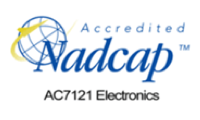Braided coverings and shieldings are an excellent way to make wiring configurations neat and uniform. Braiding gives wires more flexibility and a longer lifespan and can also offer a layer of electric protection or abrasion resistance. Although there are two different types of wire braiding widely used in the industry, machine braiding and premade (or slide-on) braiding, machine braiding offers more versatility, cost savings, and consistency, and should be something a contract manufacturing partner should be able to do in-house.
Braided covers, made from materials like kevlar, polyamide, and nomex, provide abrasion resistance and protect the wiring configurations inside from damage. Braided shielding, made from nickel or copper plated with tin or silver, offers electrical protection by providing electromagnetic or radio frequency shielding. Braided covers and shields can be obtained either commercially, in pre-cut and pre-sized sleeves, or in-house, using braiding machines that weave over the product to fit its exact specifications.
Each type of braiding carries its own advantages and disadvantages. For example, slide-on braiding can be convenient and cheap, as it comes prepared and already sized. Slide-ons can be applied to an assembly quickly and easily. Some complicated or unusually-shaped assemblies, however, may not fit into a standardized size or they may not have a free end to slide the premade braiding onto. These premade braids limit the manufacturer to only being able to cover or shield certain assemblies.
In these situations, machine braiding is a better option, offering the ability to custom size the braiding around a wiring assembly. This creates a perfect fit every time, not limiting the manufacturer to standardized sizes and is often ultimately more cost effective, providing exactly what is needed and producing a more secure and durable product.
Sometimes, the manufacturer can even utilize a slide-on braid and finish the needed modifications with machine braid, should the fit of the slide-on not be adequate. This can secure premade braiding into something more neat and customizable, and offer extra protection for the assembly.
Custom, in-house machine braiding is a process an experienced supplier will be familiar with. With eight braiding machines currently in use, Liberty, for example, works to ensure the best protection for its products. These machines allow the company to produce either coverings or shieldings with all standard materials, including nylon, ceramic, and metal.
The versatility and cost-effectiveness of custom machine braiding creates flexible, long-lasting cable assemblies that might otherwise be difficult to shield, generating products that are uniform, protected, and secure. Liberty’s ability to provide these assemblies to clients shows the company’s own commitment to excellence, and its desire to fit the customer’s exact needs from the initial design to the finished, braided details.
What braiding issues have you seen with either machine or premade wire braiding? Let us know in the comments below. For questions about out braiding process or our quality standards, please reach out for further details.




